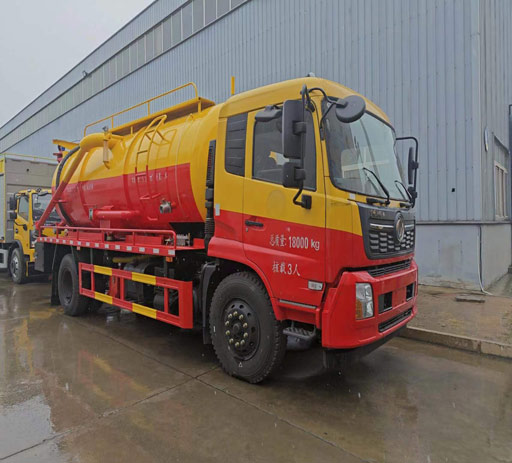Fire Rescue Tools: Essential Equipment for Saving Lives
Fire rescue tools are critical for fire fighters and rescue teams, enabling them to effectively handle emergencies and save lives. This comprehensive guide delves into various fire rescue tools, their importance, features, and practical applications. From traditional tools to advanced technology, we will explore everything you need to know about fire rescue tools.
Table of Contents
- What Are Fire Rescue Tools?
- Importance of Fire Rescue Tools
- Types of Fire Rescue Tools
- Hand Tools
- Power Tools
- Thermal Imaging Devices
- Personal Protective Equipment (PPE)
- Fall Protection Tools
- Choosing the Right Tools for the Job
- Maintenance and Care of Fire Rescue Tools
- Training and Usage of Fire Rescue Tools
- The Future of Fire Rescue Tools
- Frequently Asked Questions
What Are Fire Rescue Tools?
Fire rescue tools are specialized equipment designed to aid firefighters and rescue personnel in emergency situations. These tools range from simple hand tools to sophisticated machines that help in fire suppression, rescue operations, and victim extrication. They are essential for optimizing response times and increasing the safety of both the rescue teams and victims.
Importance of Fire Rescue Tools

Fire rescue tools play a pivotal role in saving lives and minimizing property damage during fire emergencies. The significance of these tools is underlined by the following factors:
- Efficiency: Fire rescue tools enable firefighters to quickly navigate hazardous environments.
- Safety: Properly designed tools ensure the safety of both firefighters and victims.
- Versatility: Various tools are tailored for specific challenges faced during emergencies.
- Technological advancement: Improved tools enhance performance, with new technologies increasing efficacy.
Types of Fire Rescue Tools
Hand Tools
Hand tools are essential for making quick interventions during rescue operations. Some common hand tools include:

- Axe: Useful for breaking through barriers and walls.
- Halligan Bar: A multipurpose striking and prying tool invaluable for entry.
- Sledgehammer: Ideal for demolishing structures or breaking locks.
- Fire Hooks: Designed for pulling down ceilings and walls to find fire hotspots.
Power Tools
Power tools enhance the speed and efficiency of rescue missions, particularly in difficult circumstances. Key power tools include:
- Cutting Tools: Types include saws and hydraulic cutters, allowing quick access to trapped persons.
- Rescue Tools: Hydraulic spreaders and cutters (often known as the “Jaws of Life”) are used in vehicle extrication.
- Fans: Positive pressure fans help in ventilating smoke-filled rooms.
Thermal Imaging Devices
Thermal imaging devices help locate hotspots and victims in low-visibility situations. They provide real-time thermal images that can show temperature variations, allowing firefighters to:
- Identify fire spread.
- Locate trapped individuals.
- Assess ignition sources.
Personal Protective Equipment (PPE)
PPE is crucial in safeguarding firefighters during rescue operations. Key components of PPE include:
- Fire-resistant clothing: Protects against heat and flames.
- Helmets: Shields against head injuries.
- Gloves: Safeguards hands from burns and cuts.
- Boots: Designed to protect feet from sharp objects and heat.
Fall Protection Tools
Safety during rescue operations often involves working at heights. Fall protection tools help prevent accidents during such rescues. Essential tools include:
- Harnesses: Secure firefighters during aerial rescues.
- Lanyards: Prevent falls and allow easy movement.
- Anchor points: Provide sturdy places to secure safety lines.

Choosing the Right Tools for the Job
Selecting the appropriate fire rescue tools involves understanding the specific requirements of each scenario. Here are some tips for choosing the right tools:
- Assess the Environment: Evaluate the conditions to determine which tools are necessary.
- Consider Type of Incident: Different incidents require different tools; e.g., building fires vs. vehicle accidents.
- Know the Team’s Skills: Choose tools that align with the team’s training and experience.
Maintenance and Care of Fire Rescue Tools
Proper maintenance of fire rescue tools is essential for ensuring they function correctly when needed. Best practices for maintenance include:
- Regular Inspections: Conduct routine checks for wear and damage to tools.
- Cleaning: Clean tools after each use to avoid buildup of debris or contaminants.
- Storage: Store tools in designated locations to prevent loss and damage.
Training and Usage of Fire Rescue Tools
Effective use of fire rescue tools requires comprehensive training. Consider the following aspects:
- Hands-on Training: Participating in practical exercises helps familiarize firefighters with tools.
- Ongoing Education: Keeping up with new technologies and techniques is crucial.
- Team Drills: Conducting regular drills enhances team coordination during real emergencies.
The Future of Fire Rescue Tools
As technology advances, fire rescue tools are becoming more sophisticated. Emerging trends in fire rescue tools include:
- Smart Tools: Integration of IoT technology for real-time monitoring and diagnostics.
- Robotics: Use of drones and robotic systems for surveillance and rescues in hazardous areas.
- Enhanced Personal Safety Gear: Developing PPE with built-in communication systems and health monitoring.
Frequently Asked Questions
What are the most common fire rescue tools?
The most common fire rescue tools include axes, Halligan bars, hydraulic cutters, thermal imaging cameras, and personal protective equipment.
How often should fire rescue tools be inspected?
Fire rescue tools should be inspected regularly, ideally after each use, and undergo comprehensive checks at least once a month.
Can anyone use fire rescue tools?
No, fire rescue tools should only be used by trained professionals due to safety concerns and the complex nature of emergency rescues.
What is the importance of personal protective equipment in fire rescue?
Personal protective equipment is essential for safeguarding firefighters against hazards such as heat, flames, smoke, and sharp objects during emergencies.
How can technology improve fire rescue operations?
Technology can improve fire rescue operations through advanced tools, predictive analytics, communication systems, and enhanced training methods.
Are there fire rescue tools specifically designed for vehicle rescues?
Yes, tools like hydraulic spreaders and cutters, commonly known as the “Jaws of Life,” are specifically designed for extricating victims from vehicles.
